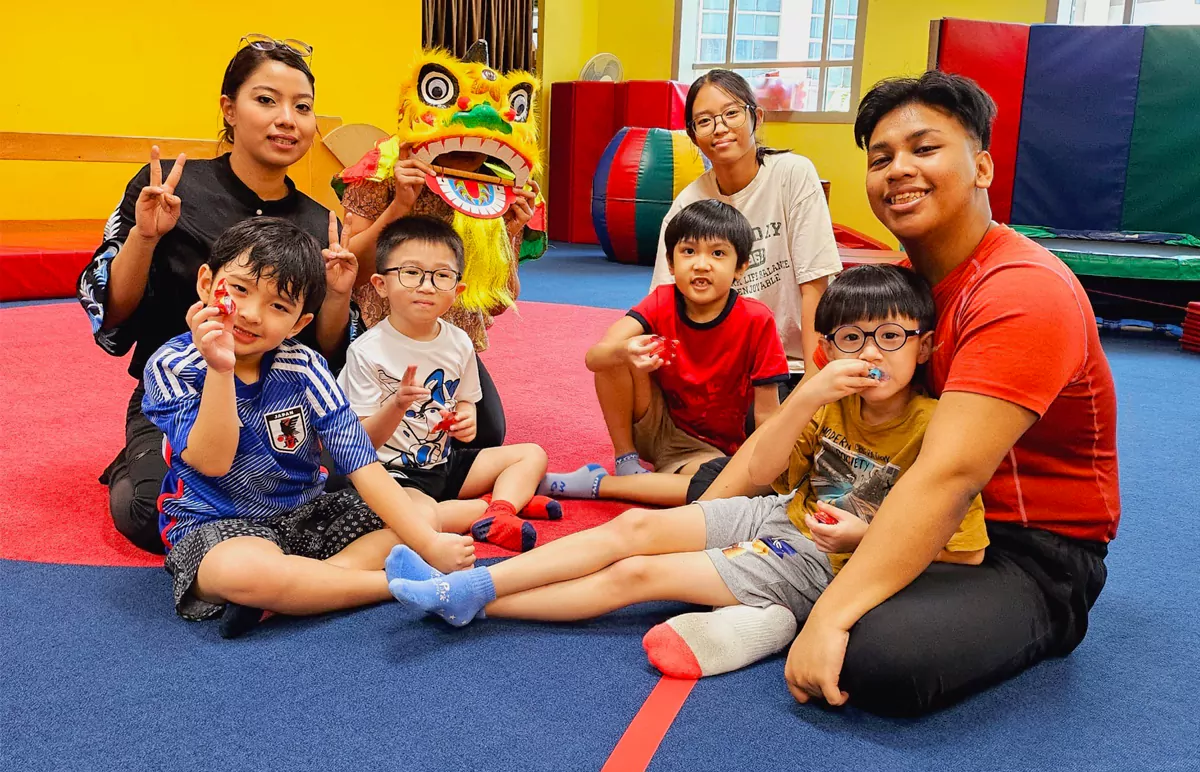How To Teach Your Child To Be A Good Speaker
Talking, understanding others and knowing what to say are really important life skills. Acquiring Communication skills for your child early will help her to make friends, learn and enjoy her life to the fullest. And you, as you are already aware, will be your child’s first and most important teacher. You are in charge.
The truth of the matter is, some children find it hard to speak. Some are shy. Some don’t want to make mistakes. Fortunately, it never too late. A parent can intervene and help a child feel more confident by creating a positive and encouraging atmosphere at home. How not to be afraid to make mistakes. And letting your child know that failing is a normal and important part of learning when it comes to growing up and being able to articulate and speak well.
Remember articulation for children serves as an essential connection to the external world and your child will start communicating by listening and using body language. Then using just a few more words and phrases, a child can and will begin using short and complete sentences. Be coherent and speak with consummate skill.
So where do you begin?
Raising good speakers and confident communicators involves a combination of fostering a supportive environment, providing opportunities for regular practice, and modelling effective communication skills. And, you can begin the process of acquiring early communication skills by incorporating a few effective techniques into your child’s daily routine.
Holding your child’s attention
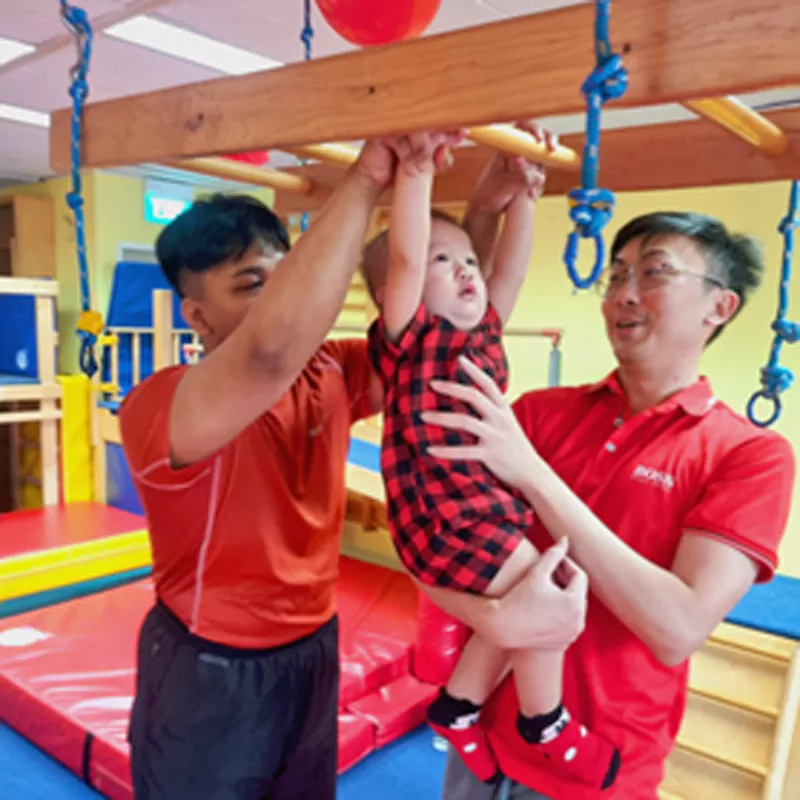
Assist your child’s speaking and listening skills by helping her increase the duration of her attention span. In an age where attention spans are shrinking, meeting this objective will help a child learn that having the ability to maintain focus will be a big advantage when learning anything, not just learning to speak better.
Encourage your child to express herself at her own pace; there’s no need to push for elaborate and lengthy responses. Even a single-word reply is perfectly fine if that’s all she is comfortable with at the moment. Be at ease and exude a sense of calm with your face.
This will let your child feel your contentment with whatever you are sharing. Ensure that you create a situation where your conversations are not interrupted; resist the urge to cut short, and discourage others from doing so as well. Let words flow freely without the hindrance of your eagerness to be of help and intrude.
You need not correct the mistakes a child makes in real time, keep them for later discussions. Allowing your child to speak without constant correction not only boosts her speaking and listening skills but also fosters spoken fluency and increases her confidence levels.
Work on creating opportunities for your child to use words and phrases she already knows. Leveraging what she already knows will enhance her language skills in a comfortable and familiar context. Confirm what your child is understanding in the moment – these may include comprehension of questions and instructions that need to be followed.
Here is a tip that works: You may use plain English or switch to Mandarin because responding in the mother tongue will make clarifications clear and simpler. (Use simplified Chinese words borrowed from Hokkien, Teochew, Cantonese, or Hainanese dialects).
To help increase your child’s confidence in speaking, keep your language activities together enjoyable and concise. For instance, during car rides, encourage your child to share what she is observing. Whether it’s pointing out a red car, counting buses, or reading out the numberplates aloud, make it a playful exercise.
Finally, embrace mistakes and understand that the primary goal is for your child to learn and articulate English words freely and without undue concern about getting them wrong.
Enjoy and have fun learning
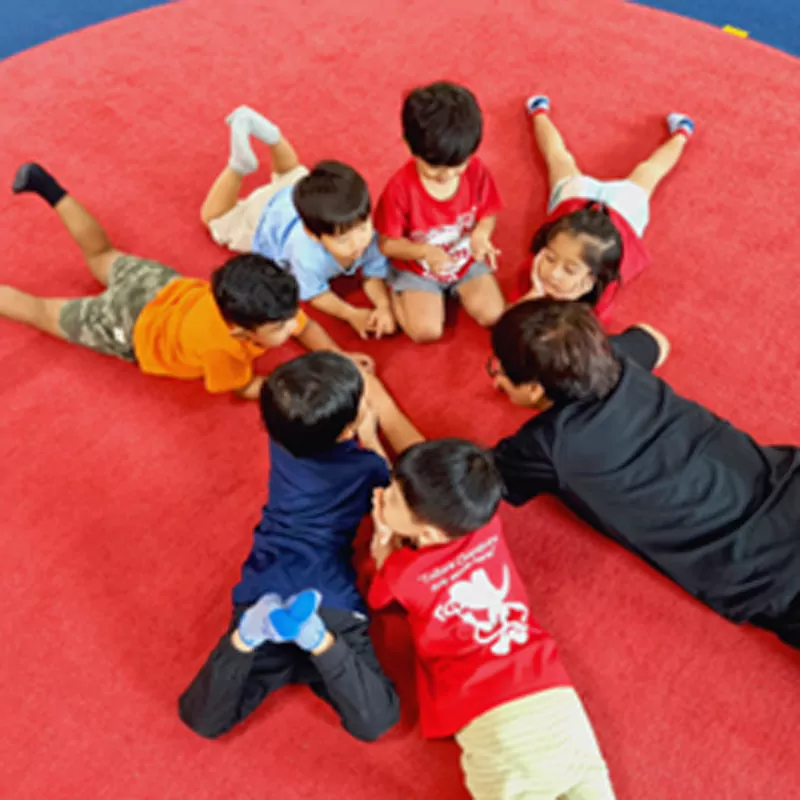
Make it an active interaction. Dive into the world of engaging and effective communication with energy. Interactions, when spiked with actions, songs, noises, and funny faces will make it both entertaining and beneficial for a young child’s language development.
Actions speak louder than words, especially with young children. Use exaggerated gestures and movements to convey your message. If you’re talking about a big, juicy apple, pretend to take a giant bite with enthusiasm. It not only captures your child’s attention but also adds a visual element to the words you use.
You could also turn your words into a catchy tune! Children love music, and singing can make words and phrases more engaging. Create simple songs about daily routines, like brushing your teeth or getting dressed. The rhythm and melody not only make it fun but also aid in memory retention.
Sound is more than noise! Always incorporate animal noises, vehicle sounds, or even funny sound effects into your conversation with young children. If you’re talking about a cat, throw in a playful “meow.” This not only adds an element of playfulness but also introduces new vocabulary in an entertaining way.
Use your face as a canvas for expression! Make funny faces that correspond to the emotions or actions you’re describing. If you’re talking about a surprised puppy, widen your eyes and mimic the excitement. Children are drawn to expressive faces, and this visual connection grabs attention and enhances a child’s understanding.
You can transform storytelling into an interactive experience. Encourage your child to participate by asking questions, using props, or even acting out parts of the story. This not only stimulates your child’s imagination but also fosters language skills through engagement.
Try not to shy away from looking a little silly! Being a bit goofy creates a relaxed and enjoyable environment. Make up silly words, engage in playful banter, and show your child that language is not just about serious communication but can also be a source of joy and laughter.
Being repetitive is key for language development, and adding a playful twist keeps it interesting. Repeat words or phrases using different voices or exaggerated tones. This not only reinforces the learning but also provides a dynamic and entertaining way to grasp new concepts and ideas.
At the end of the day, your goal is to create a language-rich environment that captivates your child’s attention and makes the learning process enjoyable. So, dive into the world of whimsy, wishy-washy world of imagination and fantasy and watch your child’s language skills flourish amidst the laughter and joy.
Letting conversations flow
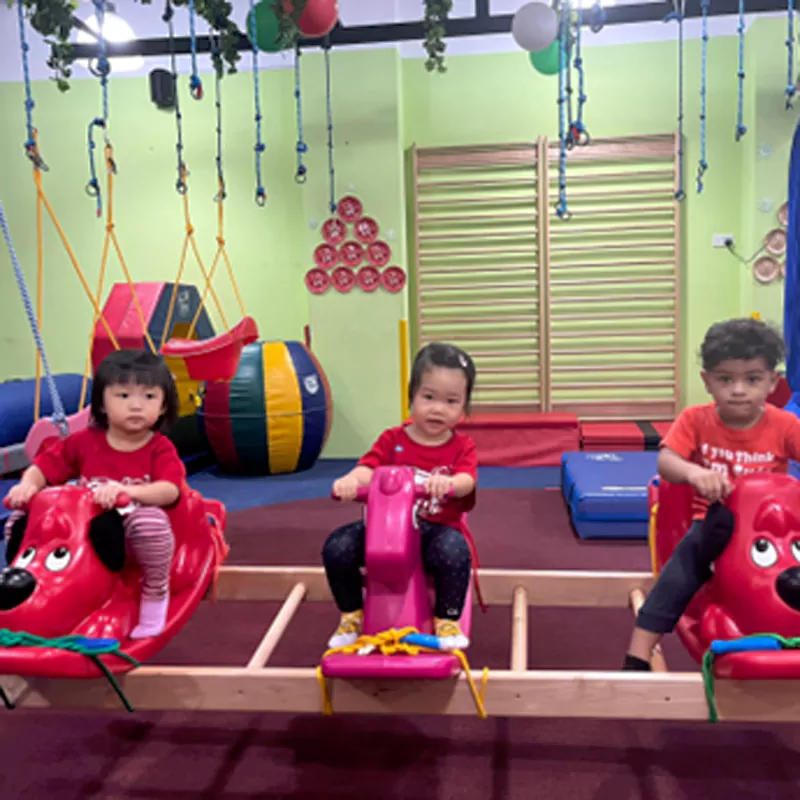
Instead of bombarding your young child with questions that might feel like a quiz, turn it into a captivating dialogue. Make it intriguing, like unfolding a mystery or setting out on a journey of discovery.
Try and imagine that you’re the narrator of a fascinating story! Rather than firing questions, provide a running commentary on a scene unfolding before you. If your baby is playing with blocks, describe the colours, shapes, and the impressive tower she is building. Or when you are watching a breaking news story.
This becomes easier when you think of what you are saying as a narration of action taking place on the TV screen. Or be the voiceover of your own child’s daily antics! As your child explores the wonders of the world, be the commentator. If she is reaching out for a toy, say, “Look at you, grabbing the colourful toy! What an explorer you have become!”
Turn your surroundings into a captivating narrative. Whether you’re in the park or at home, comment on the trees, the sunshine, or the raindrops on the window. This not only helps build your child’s vocabulary but also connects words to real-life experiences.
Remember to celebrate big and tiny achievements. Become your child’s biggest supporter and cheerleader! Instead of asking, “Can you say ball?” say, “You grabbed the ball! That’s awesome!” Acknowledge your child’s actions and accomplishments to boost her confidence and make her feel recognized or rewarded.
Engage in a playful exchange of words. If your child is just babbling, respond with enthusiasm as if you’re having a conversation. This back-and-forth builds a sense of connection and encourages a young child to continue expressing her thoughts.
Paint a vivid picture with your words. Describe the softness of your child’s teddy bear or the crunchiness of a snack. This not only enhances a child’s understanding of different textures but also adds a layer of sensory exploration to your conversations.
Share your excitement. Show your child that words can express joy! When she does something cute or funny, react with enthusiasm. Your excitement becomes contagious, and she is bound to start associating language with positive feelings and emotions.
Do not pretend to be anything other than a loving parent. So be yourself! Maintain a calm and natural tone. Your child will pick up on the vibes around her, and a relaxed atmosphere fosters a more enjoyable and effective learning outcome.
Remember, it’s not about turning every interaction into a quiz. Instead, make it a delightful conversation that unfolds naturally. By providing a running commentary on our child, you not only help build her language skills but also create a warm and engaging space for meaningful connection. Comment by all means, but don’t act as a brake, avoid questioning.
Give your child time to think through
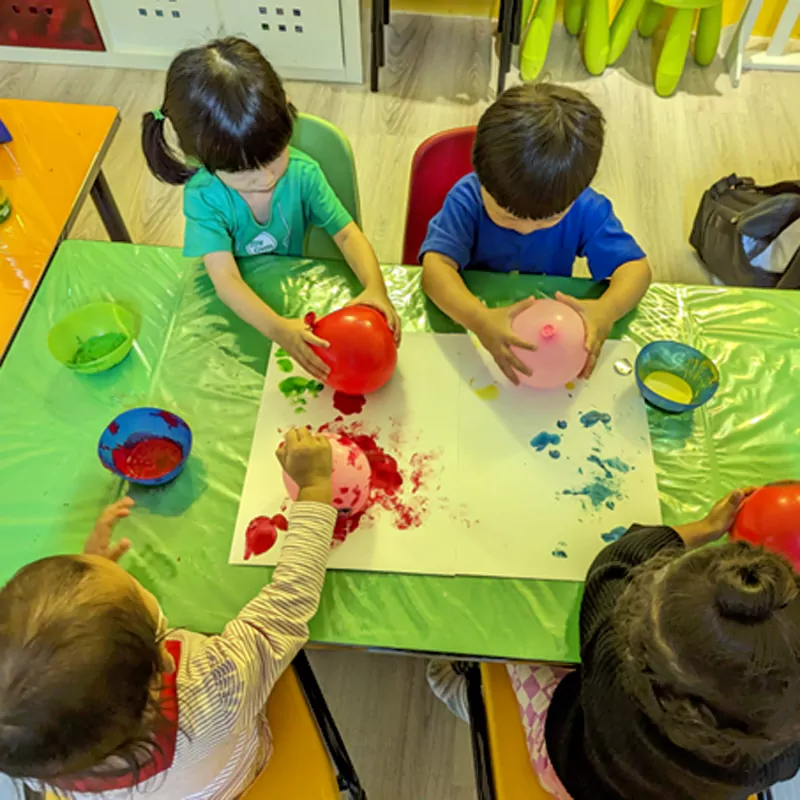
Unravel the art of giving your child the time and space they need to process information and formulate their responses. Just like a garden needs time to bloom, children need a little extra time to let their thoughts form and bloom.
Become an attentive observer. As you wait for their response, maintain eye contact. Your gaze is like a reassuring anchor for your child. It lets her know that you are fully present and interested in what she has to share. It creates a silent invitation for her to open up and engage in a conversation.
Encourage your child to be a thinker. Just as you ponder over a beautiful sunset, give your child the mental space to reflect. This not only fosters independent thought but also builds her confidence in expressing herself when she is ready.
Use silence as a powerful ally. Allow moments of quiet to linger, like the hush before a magical reveal. This empowers your child to collect her thoughts and find the words that best express her feelings or ideas.
The art of communication isn’t just about words; it’s a dance of expression. So encourage your child to use gestures, facial expressions, or even drawings to convey her thoughts. This provides alternative channels for communication, especially if words take a little longer to form.
Let your child know that it’s okay to take her time. Like an artist painting a masterpiece, the process is just as important as the final creation. Celebrate the effort she puts into considering her response, reinforcing the idea that thoughtful communication is a skill worth nurturing.
Turn your home into a cosy sanctuary where thoughts are respected and embraced. Create an environment where your child feels safe to express herself at her own pace, fostering a sense of comfort and security.
Just like a blooming flower that needs time to unfold its petals, your child will need the time and space to bloom in her own unique way. By giving your child this precious gift of time, you’re nurturing not only her language skills but also her confidence and independence. So, let conversations happen at their own pace.
Use simple words and phrases
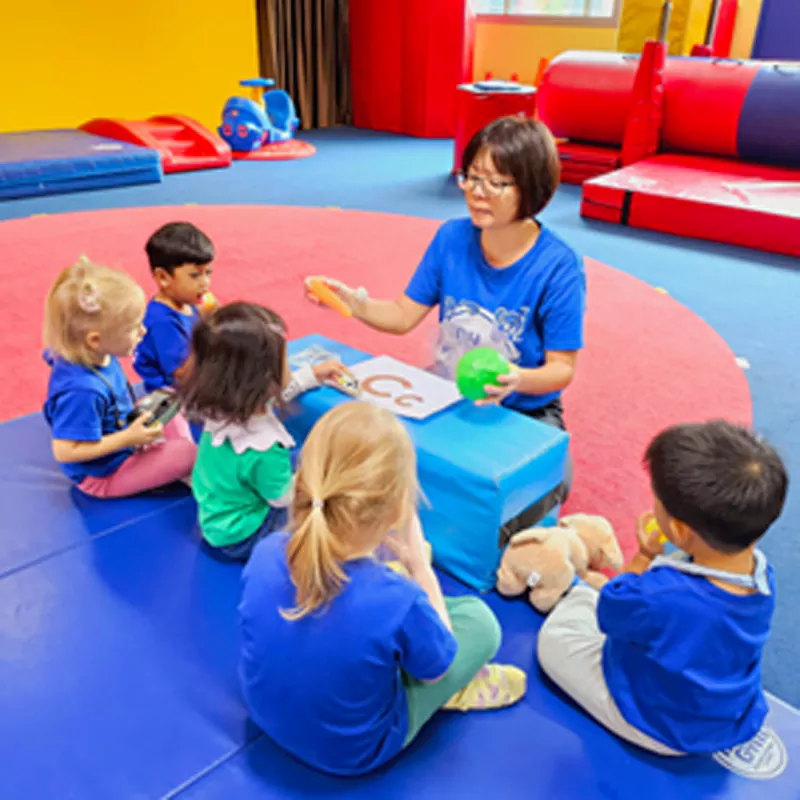
Explore the wonderful world of using simple language, where the magic of communication happens through short and simple sentences that spark understanding and increase comprehension.
Imagine a language as a friendly puzzle, and simple words and short sentences are the building blocks. Instead of opting for complex sentences, choose and use words that create a clear and vivid picture. “Time for food” or “Look at the huge ship…, ” become like colourful puzzle pieces that fit perfectly.
Let your words dance in short, rhythmic sequences. It’s like composing a musical piece where each note is crisp and clear. “Playtime now” or “Raining outside” form a delightful melody that captures attention and is easy for little ears to hear clearly and grasp easily.
Paint pictures with your words and turn sentences into vibrant paintings. Imagine you are an artist creating a masterpiece with words. “Thick, black clouds in the sky” or “Birds flying south” paint vivid scenes that help your child visualize and connect words to the world around her.
Make ordinary moments extraordinary with your words. “Bath time, fun time” or “Shoes on, ready to go” adds a little excitement to daily routines. This not only makes boring tasks more enjoyable but also turns them into language-rich experiences.
Think of speaking to each other as a playful game. Create short, interactive sentences that invite participation. “Where’s the ball?” or “Can you say hi there?” transforms communication into a joyful exchange, making learning language feel like a delightful process.
Infuse your words with energy and enthusiasm. Imagine you’re a storyteller with each sentence carrying a burst of excitement. “Big hug for you” or “Yummy banana” become moments filled with joy and positive reinforcement.
Repetition is your ally! Like a catchy tune that you can’t get out of your head, repeat simple phrases. “Goodnight, sleep tight” or “Have a nice day” not only stick in the memory but also become comforting and familiar expressions.
Remember, simplicity is the key to unlocking the world of language for little ones. By using short and engaging sentences, you’re not just communicating, but you’re also creating a language-rich environment where every word becomes a stepping stone in the exciting journey of learning and discovery. So, let the adventure in simple language learning begin at home and start this from an early age!
As you embrace these dynamic strategies, you realize that you hold the key to unlocking your child’s potential to become skilled storytellers, confident conversationalists and empowered global communicators, shaping a future where words wield the power to inspire and connect.
Allow your child to choose
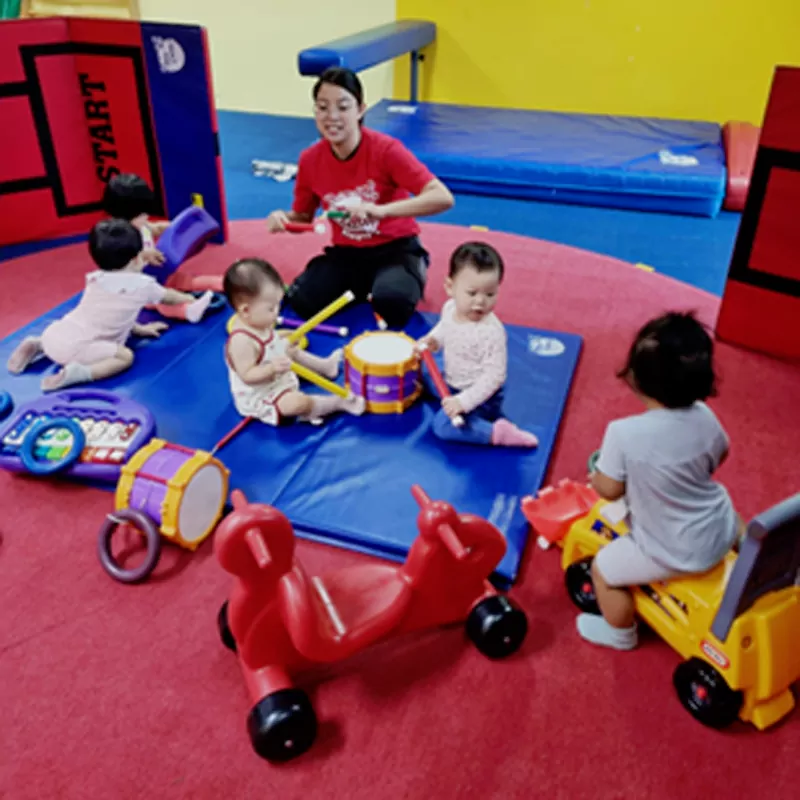
Empower your child by allowing her to choose a topic that sparks her interest. Getting children to open up becomes a breeze when you let them discuss something they’re genuinely enthusiastic about. This is especially effective when the child speaker can delve into a subject she feels strongly about.
When introducing the idea of public speaking, create a vivid scenario where your child imagines speaking to her friends about a topic close to her heart. Whether it’s the excitement of video games or the importance of climate change.
This imagery helps dispel any uncertainties your child might have about addressing a group of people. It’s like opening a door to her comfort zone, making the idea of speaking in public less daunting. Advocating for topics that have a personal connection to your child not only boosts her confidence but also makes her presentation more authentic and engaging.
Guide your child and select topics that showcase her strengths or hobbies. This not only enhances her speaking abilities but also allows her to share her expertise and passions with others, creating a more enjoyable experience for both the speaker and her audience.
Before your child addresses a large crowd, suggest practising with familiar faces such as family members or close friends. This provides a supportive environment for honing your child’s public speaking skills, allowing her to build confidence levels gradually.
Instil a sense of curiosity in exploring diverse topics. Encourage your child to pick subjects that pique her interest and ignite her curiosity. This not only broadens her knowledge base but also fosters a love for learning and sharing information.
By letting your child take control of the topic, you’re not just fostering effective communication skills but also nurturing her self-expression and individuality. It’s like giving her a passport to explore the exciting world of ideas and share her discoveries with others.
Practice, practice and more practice
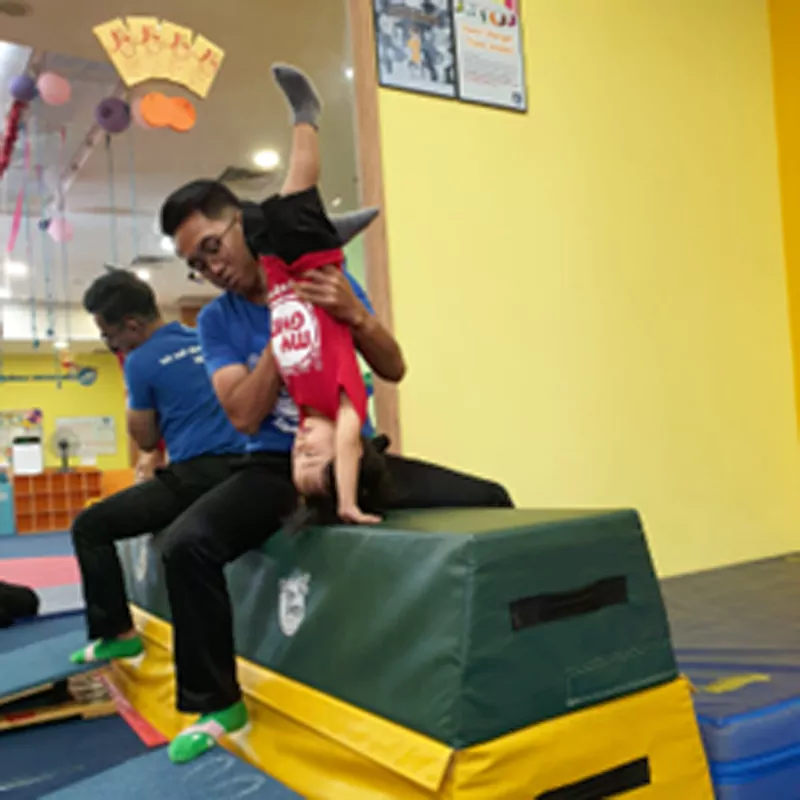
Consistent and dedicated practice plays a pivotal role in honing public speaking skills, making it a fundamental aspect of the learning process. Once you’ve sparked your child’s interest in a particular topic, take the initiative to organize practice sessions, involving a small audience comprised of her friends or peers. This not only ensures active engagement but also serves as a crucial stepping stone for refining her speaking abilities.
Reiterate the significance of practice as the linchpin for improvement. Emphasize to your child that the more she dedicates herself to practice, the more at ease and confident she will become. Drawing an analogy, liken it to sharpening a pencil before embarking on a substantial writing task – the continuous practice will undoubtedly enhance her speaking prowess.
Assume the role of a mentor during these practice sessions, offering valuable feedback on various aspects such as tone of voice, pace, and body language. Creating a nurturing environment, provide positive reinforcement along with gentle suggestions for improvement, fostering a constructive approach to public speaking skill development.
Elaborate on the transformative power of thinking out loud. Clarify to your child that through practice, she can effectively organize her thoughts and refine her ideas, likening it to sculpting a piece of clay. The iterative process of molding and shaping during practice leads to a more polished and impactful presentation.
Highlight the importance of observation by encouraging your child to watch her peers present, irrespective of their success or challenges. This cultivates a sense of camaraderie and confidence, conveying the idea that everyone is in a constant state of learning and growth. This approach creates a supportive environment, aiding in embracing the inevitable highs and lows of public speaking.
Cultivate a safe and judgment-free space for learning during practice sessions. Emphasize that mistakes are integral to the learning process and serve as stepping stones toward improvement. Instilling this mindset reduces anxiety and fosters a positive attitude towards the journey of mastering public speaking.
By integrating practice sessions with peers, you not only prepare your child for the actual event but also establish a collaborative and supportive environment for skill development. This collective effort resembles having a team of allies on their public speaking journey, rendering the experience both enjoyable and growth-oriented.
How My Gym helps
One effective way to help young children help learn to be better speakers is by involving them in physical activities. My Gym promotes communication skills and all-round development by helping children perform dynamic physical movements individually and in groups. This makes it possible for children to interact in a safe setting and learn to concentrate and be attentive and focussed – listening to instructions, and listening to what the instructor is saying.
By doing this day in and day out, children acquire critical listening skills that play a big role in acquiring social and communication skills, enabling them to navigate complex social situations and nurture emotional development to lead healthier lives.
My Gym’s enrichment programs augment the growth of neural networks in the brain and lay a firm foundation for personal, academic and future growth by involving children in age-appropriate, structured and unstructured play designed to develop language, listening, thinking and problem-solving skills.
Please visit any of My Gym centres to learn more about how it can support “whole-child development”. Choose a day when you are relatively free and come over with your child in tow. Your child could be an infant (as young as 6 months), a toddler or a preschooler, age is not a bar to learn how your child can pick up skills just by looking, listening and imitating. without missing out on anything!
Please note: My Gym classrooms are thoroughly sanitized every day — the tables, the chairs, the children’s activity stations and everything else the child might touch is made safe and clean. Whenever required, children are encouraged to wear a mask, wash their hands frequently, and practice social distancing as well.



